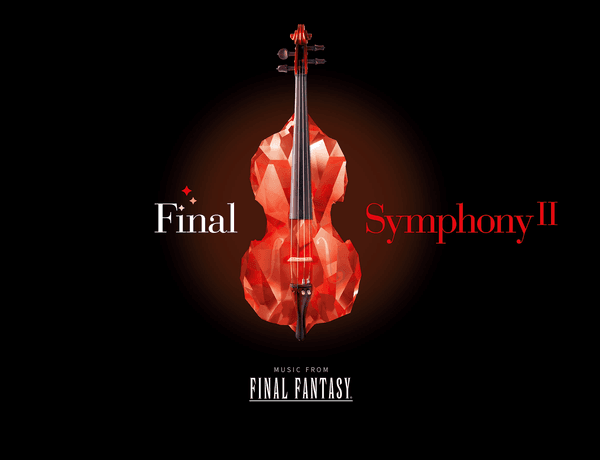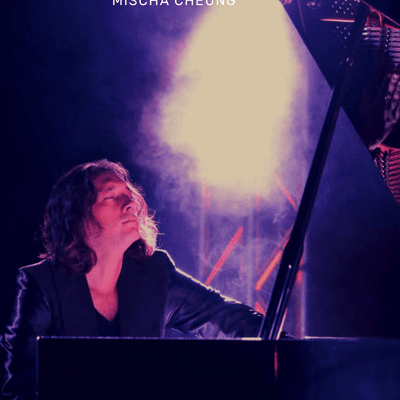Final Symphony II: Music from FINAL FANTASY

Full programme
- Valtonen, In a Roundabout Way: Fanfare
- Hamauzu, FINAL FANTASY XIII: Utopia in the Sky
- Uematsu, FINAL FANTASY IX: For the People of Gaia
- Uematsu, FINAL FANTASY VIII: Mono no aware
- Uematsu, FINAL FANTASY V: Library of Ancients
Performers

Eckehard Stier
Conductor
Mischa Cheung
Piano
Introduction
Final Symphony II is a concert series officially licensed by Square Enix, featuring symphonic music from the video games FINAL FANTASY® V, VIII, IX and XIII, originally composed by Nobuo Uematsu and Masashi Hamauzu. The creator and producer of the world tour is Thomas Böcker.
Final Symphony II debuted in Germany in August 2015, performed by the Beethoven Orchestra Bonn, conducted by Eckehard Stier. The UK premiere was with the London Symphony Orchestra, which then travelled to Japan for three more concerts with sold-out performances for an audience of 7,000. Nobuo Uematsu and Masashi Hamauzu took on the role of presenters for the programmes in Osaka and Yokohama. Subsequent performances took place in Finland, Sweden and the Netherlands.
The exclusive arrangements for Final Symphony II are by Jonne Valtonen and Roger Wanamo, and a new suite of music from FINAL FANTASY XIII was written by the original composer Masashi Hamauzu.
The FINAL FANTASY franchise stands as an iconic pillar in the realm of video games, captivating players with its mesmerising worlds, compelling narratives, and innovative gameplay. Since its inception in 1987, this series has evolved into a cultural phenomenon, spanning numerous titles, spin-offs, and multimedia adaptations.
One of the franchise's defining features is its ability to reinvent itself with each instalment, offering fresh settings, characters, and gameplay mechanics while retaining the core essence that fans adore. Whether exploring the vast open worlds of FINAL FANTASY XV or embarking on an epic journey to save the realm in FINAL FANTASY VII, players are immersed in richly crafted universes teeming with magic, technology, and unforgettable adventures.
Beyond its immersive storytelling, FINAL FANTASY has left an indelible mark on the gaming industry through its groundbreaking visuals, stirring musical scores, and innovative gameplay systems. With each new release, the franchise continues to push the boundaries of what is possible in interactive entertainment, ensuring that its legacy will endure for generations to come.
Programme Notes
In an adventure that spans aeons and worlds – an unending, magical struggle between the forces of good and evil – the power of music stands undefeated. Tense, atmospheric and charged with emotion, the soundtracks are as compelling as the gameplay and in this concert, the full 80-piece CBSO plays music from FINAL FANTASY V, VIII, IX and XIII. Epic doesn’t cover it…
Utopia in the Sky,
FINAL FANTASY XIII
Masashi Hamauzu (b. 1971)
Jonne Valtonen’s orchestration and partial arrangement of the FINAL FANTASY XIII score is based on an original arrangement by composer Masashi Hamauzu.
Hamauzu remarks that “there were no orchestral versions of FINAL FANTASY XIII tracks that I was really satisfied with and I wanted to create a symphonic arrangement that would be truly ground-breaking. Jonne Valtonen is a highly talented arranger who helped me complete this version. I think we are able to reach a perfected version of the music.” Valtonen adds, “Hamauzu’s jazzy and impressionistic style already gave the music its gentle softness to which I added my own small imprint.”
Hamauzu decided to create an easily understood drama with the most popular songs from the game. The first three songs in this arrangement are Prelude, Vanille’s Theme and Nautilus, all of which are centered on the protagonist Vanille and express a truly beautiful and deep world. Masashi Hamauzu hopes that with these orchestral versions people will pay more attention to the themes: “this is an important thematic element that becomes subconsciously imprinted on the player throughout this long game.”
The second half of the arrangement features the dramatic battle refrains of Fang’s Theme, Blinded by Light and Serah’s Promise. Hamauzu explains that he chose Fang’s Theme for the audience to have fun with as it contains both heavy action and also lightness. Blinded by Light and Serah’s Promise are both based on previously incomplete arrangements by Hamauzu.
For the People of Gaia,
FINAL FANTASY IX
Nobuo Uematsu (b. 1959)
This concerto for piano and orchestra is Roger Wanamo’s third FINAL FANTASY-related piano orchestration. “At first it felt hard. I wanted to avoid making this too similar to my previous concertos, as I don‘t like repeating myself. However, the music in FINAL FANTASY IX is very different to that of previous games, so I had plenty of new material to work with.”
When he began to familiarize himself with the source material, the inspiration came very quickly: “I only got about five minutes into the game, to the streets of Alexandria. I listened to the music for a few minutes and then I went to the piano to play around with the melody. I realized that this Prokofiev-esque theme was just perfect for piano and orchestra – and this was, of course, the theme of the young mage Vivi.”
While the concerto is in one, single movement, the elements of a traditional four movement concerto are all featured. “After the inspiration I had from Vivi’s Theme, it soon became clear to me that the whole arrangement would have a strong focus on character motifs.” The opening of the piece focuses on the theme of Zidane, a skilled thief, which is very classical in character. The playful Vivi’s Theme functions as a scherzo and it is followed by the slow movement that focuses on the beautiful Princess Garnet. The final part represents the battle refrains and the signature tune of the nefarious sorcerer Kuja. In the final encounter, Kuja’s Theme becomes entwined with both the battle themes and fragments of the heroes’ melodies.
Mono no aware,
FINAL FANTASY VIII
Nobuo Uematsu (b. 1959)
One of the major themes in FINAL FANTASY VIII is the conflict between childhood and adulthood; nostalgia for the past and fear of an uncertain future. Mono no aware, a Japanese term for the awareness of impermanence and also the title of this arrangement, reflects these dimensions of the game. “It felt like there was more melancholy in this game, the power struggle with menacing adversaries, compared to other FINAL FANTASY games I‘ve played. This is a feeling I carried in to the arrangement, which features lots of slow and contemplative parts,” Roger Wanamo explains.
Key to this arrangement are songs that share the same melody, but are presented in very different ways, such as Tell Me with Ami and Eyes on Me with Waltz for the Moon. Wanamo continues, “This is a brilliant showcase of Uematsu’s skill in creating unity within the soundtrack by deriving very distinct pieces from the same melodic material. The piece of music that kept ringing in my head after playing the game was Tell Me/Ami, which also features in SeeD’s - a mercenary force - home base, Balamb Garden. A perfect example of how repetition strengthens the memory.”
The arrangement doesn’t follow the game’s storyline slavishly, but the ending follows a similar pattern. “The ending is calm, with the character themes fading away, leaving it open to interpretations: what exactly happens to the protagonists? It is the same as in the game itself.”
Library of Ancients
FINAL FANTASY V
Nobuo Uematsu (b. 1959)
Jonne Valtonen’s arrangement starts with Musica Machina, a theme first heard to represent an ancient base used by the heroes. The wind has disappeared in the world of FINAL FANTASY V, so this place is a source of transportation for the crew, featuring steamships and other vehicles. Valtonen expands on the importance of this theme: “I’m using this as the base for the whole arrangement; the riff from Musica Machina is repeated at various stages throughout. It is the point from which the music jumps forward to other locations and battles. It generates the wind for what is to follow.”
The theme of the young girl Reina is presented with the raising wind behind it as she joins the protagonist Bartz and the other heroes. Together they must travel the world to face X-Death, the villain, for the final confrontation. Seemingly defeated at first, the fight with X-Death recommences as the music of Spreading Grand Wings starts to generate momentum. The arrangement canters through the battle themes before finally reaching the decisive conflict that seals the fate of X-Death. “Things calm down and sorrow seeps in as the party reminisce the dead. The atmosphere soon turns to one of jubilation though, with the group’s joy of victory.”
Musica Machina, now in major key, closes the arrangement.
© Final Symphony & Final Symphony II © & 2013-2024 Merregnon Studios. Licensed by Square Enix. FINAL FANTASY is a registered trademark or trademark of Square Enix Group Co., Ltd.
Featured image © © & ℗ 2013-2023 MERREGNON STUDIOS